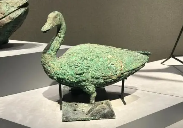Unearthing History: The Gold Ring Handicraft Site Recording in Jiamusi
In a significant archaeological discovery that sheds new light on ancient Chinese craftsmanship, experts have uncovered a gold ring handicraft site dating back to the Tang Dynasty in Jiamusi, Heilongjiang Province, China. This find not only enhances our understanding of early metallurgy but also underscores the cultural and economic importance of jewelry production during this pivotal era.
Archaeologists from Northeastern University (NEU) (visit their website) led the excavation project and meticulously documented the site's layout, artifacts, and stratigraphic layers. The excavation revealed a well-preserved workshop with tools, molds, and unfinished rings, providing invaluable insights into the techniques and processes employed by ancient artisans.

According to Dr. Li Wei, the lead archaeologist on the project, "The preservation condition of these rings and related items is exceptional. This discovery offers us a rare glimpse into the intricate world of metalworking during the Tang Dynasty, an era renowned for its artistic and technological advancements."
The team also found evidence of trade and commerce in the form of weights and measures used for trading precious materials. This suggests that the site was not only a center of production but also served as a vital trading hub within the region.
Further analysis revealed that some of the materials used in ring making, such as gold and gemstones, were sourced from distant regions, indicating a sophisticated supply chain and long-distance trade network. The site's location along major trade routes adds depth to the historical narrative of the region's economic activities.
Archaeologists believe that the site operated continuously for several decades, contributing significantly to the wealth and prosperity of the local community. This discovery will undoubtedly contribute to our understanding of ancient craftsmanship and its cultural implications.
 LongStory.Asia The Digital Archaeological Portal
LongStory.Asia The Digital Archaeological Portal